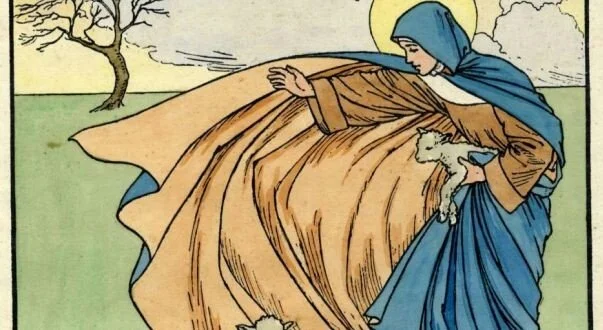
Few figures in Irish history resonate as strongly as St Brigid. A woman of remarkable faith, wisdom, and inspiration, Brigid’s legacy bridges the realms of Christian devotion and ancient mythology. She has been celebrated for centuries as a saint, founder, and goddess, embodying creativity, community, and resilience.
SAINT BRIGID
St Brigid, born around 451 AD in Faughart, County Louth, is one of Ireland's three patron saints, alongside St Patrick and St Columba. Her life is steeped in stories of compassion and boundless generosity. From a young age, Brigid showed extraordinary kindness, often giving away her family's possessions to help the poor. According to legend, her father—frustrated by her constant giving—tried to sell her into slavery, but Brigid’s actions and piety touched even her master’s heart, leading to her freedom. Brigid’s most enduring contribution to Christianity in Ireland was her founding of Kildare Abbey in 480 AD. The abbey became a powerful center of faith, education, and craftsmanship, fostering a spirit of community and learning. What made Kildare truly unique was its dual nature—it housed both monks and nuns under Brigid’s leadership, reflecting her inclusive and collaborative vision. St Brigid’s legacy as a patron of the poor and a champion of education and faith has earned her a lasting place of honor in the Church.
BRIGID THE GODDESS
Brigid’s significance extends far beyond her role as a Christian saint. Before her canonization, she was revered in Irish mythology as a powerful Celtic goddess of fire, poetry, unity, childbirth, and healing. The goddess Brigid was associated with fire and creativity, often seen as a protector of poets and craftsmen. Her festivals were celebrated at Imbolc, a time of renewal and the transition from winter to spring. Many scholars believe that early Christian leaders absorbed her pagan attributes into the story of the saint, ensuring her continued veneration during the spread of Christianity in Ireland.
SAINT BRIGID’S CLOAK
One of the most famous legends about Brigid captures her determination and divine favor. When she sought land to build her monastery, she approached a local king, asking for only as much land as her cloak could cover. Amused and doubting her intentions, the king agreed. Brigid then spread her cloak on the ground, and it miraculously expanded, covering acres of land. Awestruck, the king granted her the land, which later became the site of Kildare Abbey.
SAINT BRIGID’S WELLS
One of Brigid’s most enduring connections to the Celtic world was through sacred wells. For the Celts, these wells were hallowed places of pilgrimage, believed to be portals to the divine and sources of healing and renewal. Pilgrims would perform a ritual offering by dipping a cloth— known as a "clootie"—into the well’s water and using it to wash a wound or ailment. The clootie was then tied to a nearby tree, typically a Whitethorn or Ash, as an offering to the spirit of the well. These customs underscored the Celts’ deep relationship with nature, spirituality, and the divine feminine Brigid represented. These ancient traditions of reverence and healing were carried forward as Brigid’s identity evolved into that of a Christian saint. Modern pilgrimages to St Brigid’s wells echo these Celtic practices, blending faiths over time. On St Brigid’s Feast Day many still gather to pray at her wells, circle them in reflective ritual, and leave offerings of gratitude. The act of tying clooties to sacred trees remains a gesture of devotion and continuity, connecting visitors with an unbroken thread of tradition that stretches back to Ireland’s mythological past.
SAINT BRIGID’S CROSS
St Brigid’s Cross, a simple yet powerful symbol, is a cherished tradition in Irish homes. Made by weaving rushes into a four-armed design, the cross is said to protect families from harm and bring blessings. The tradition originates from a story in which Brigid comforted a dying pagan chieftain by weaving the first cross from rushes strewn on the floor, explaining the Christian faith as she worked. Today, many families celebrate her feast day, February 1st, by crafting these crosses, marking the beginning of spring and inviting protection, hope, and renewal into their homes.





